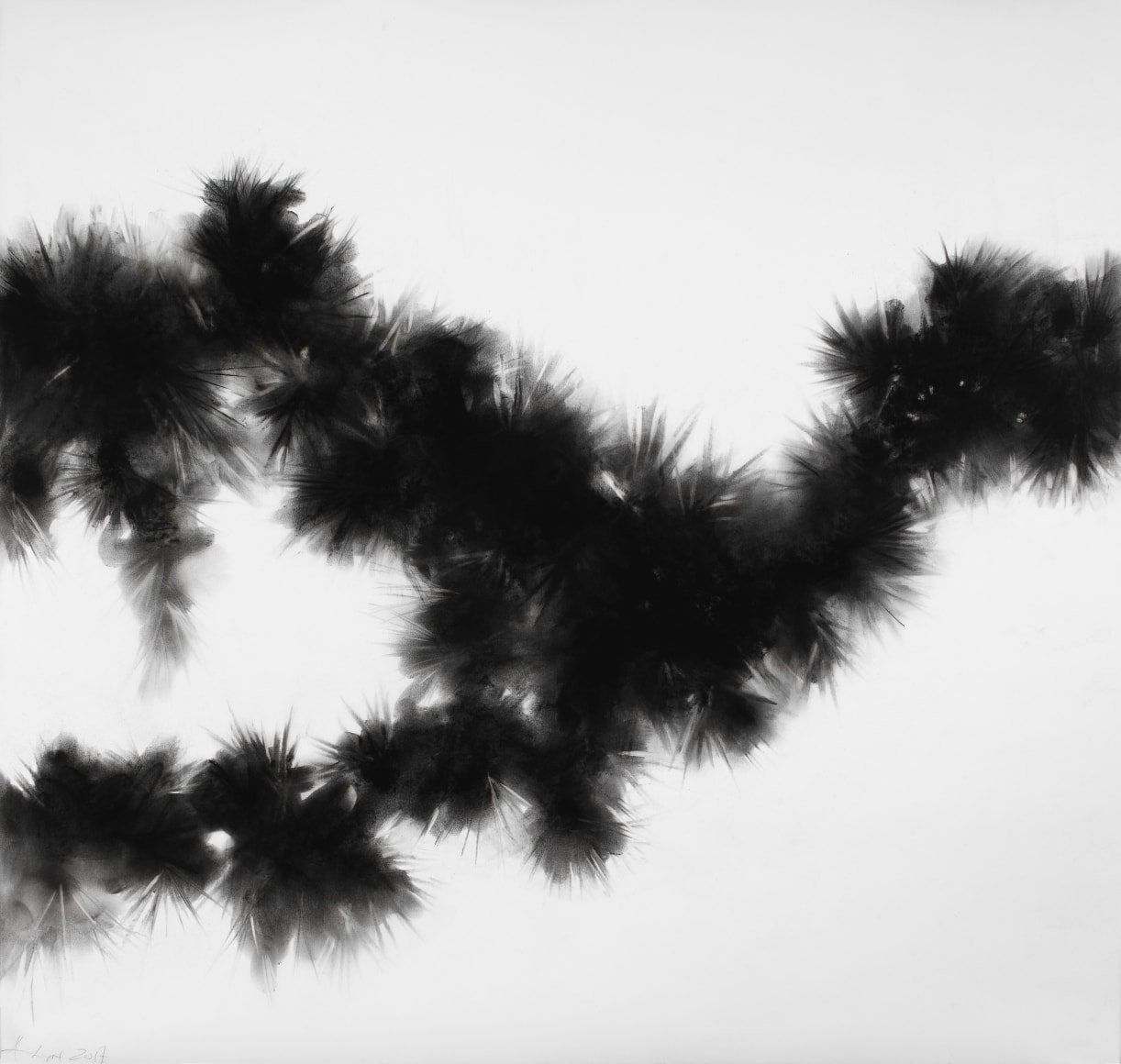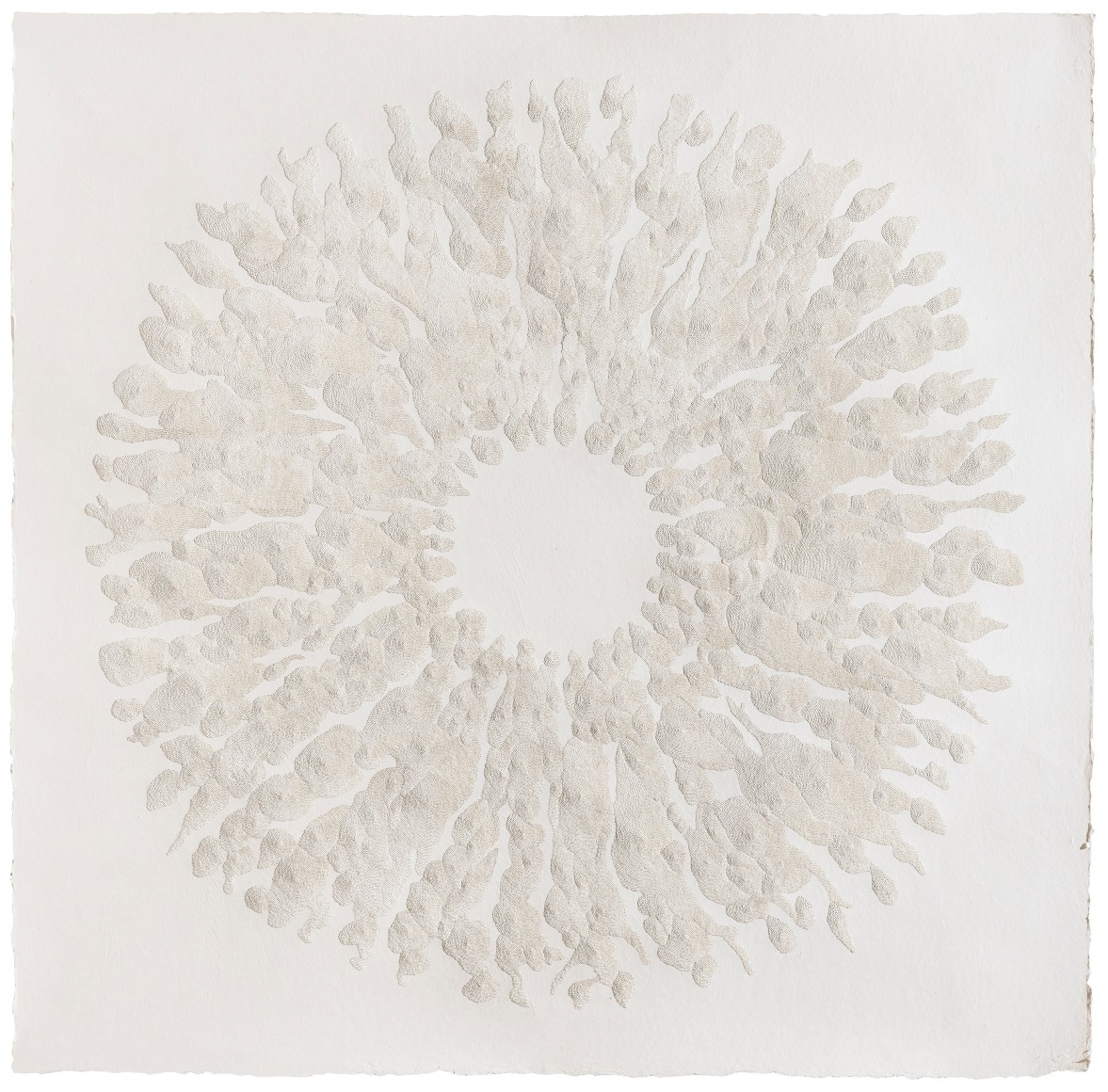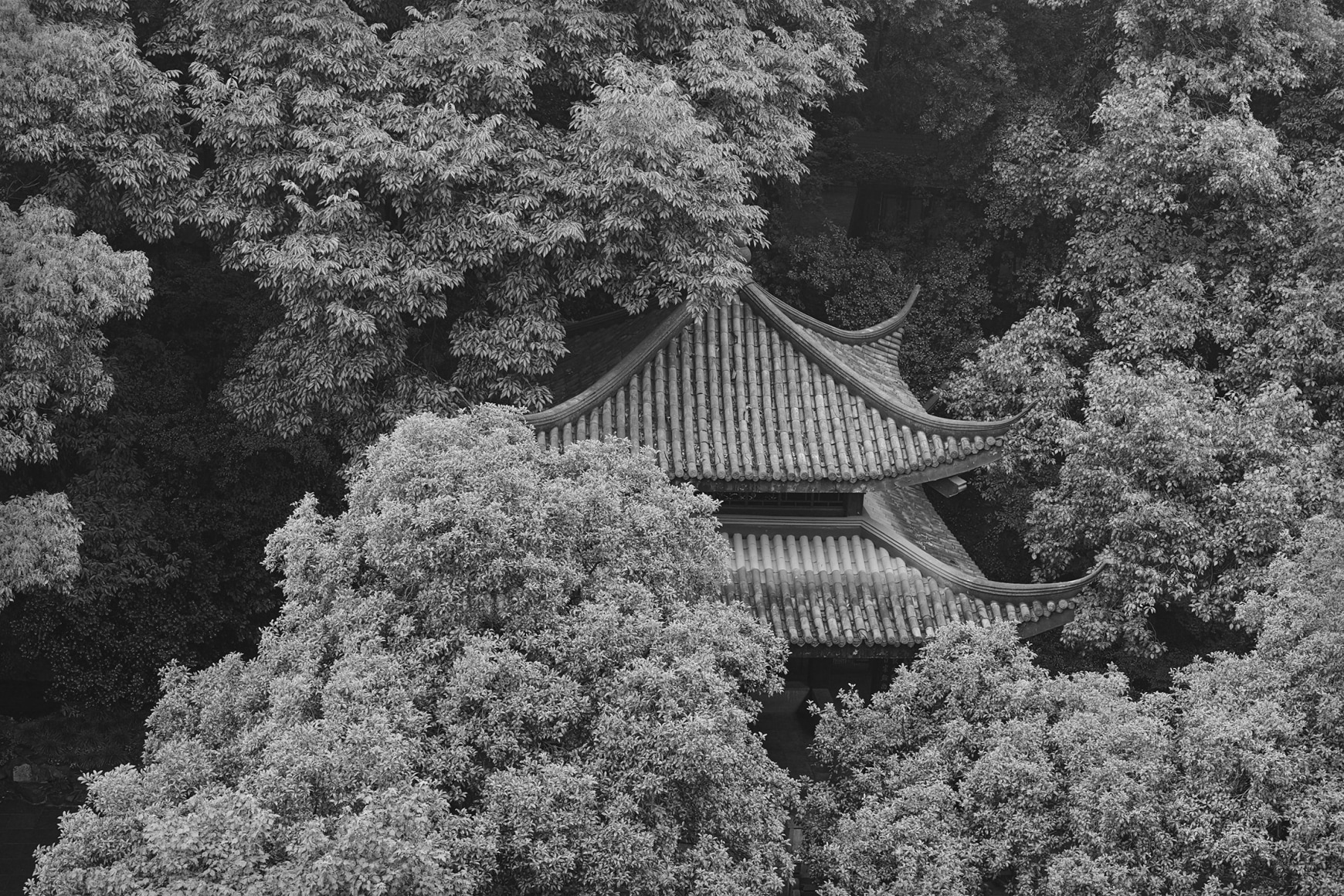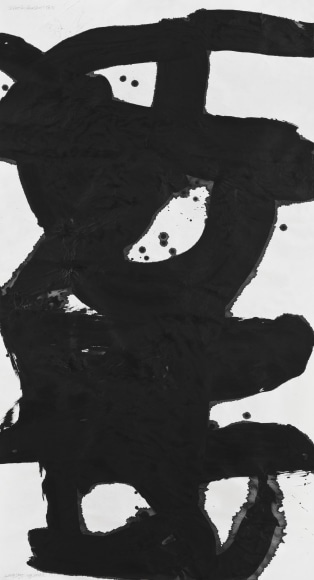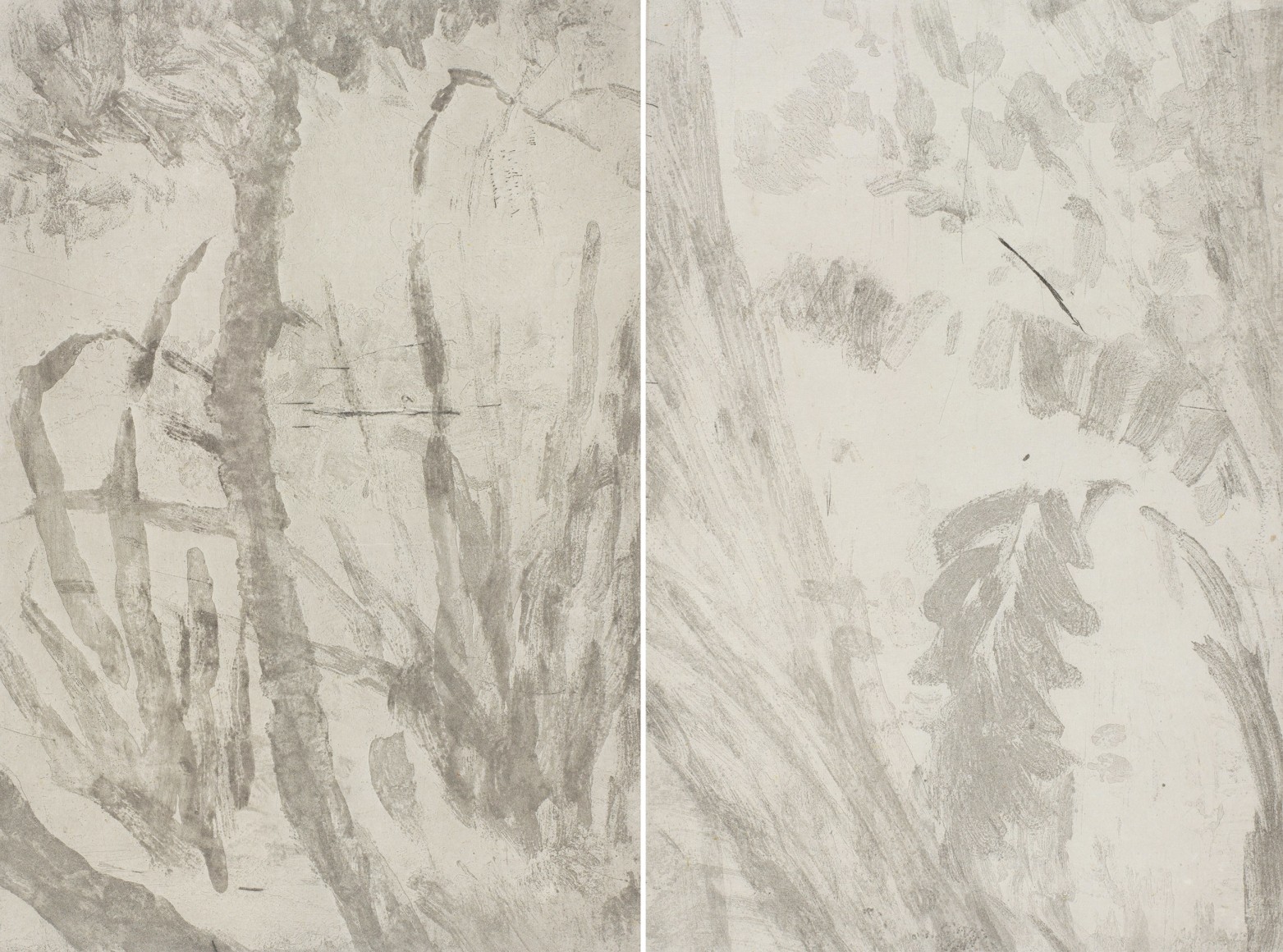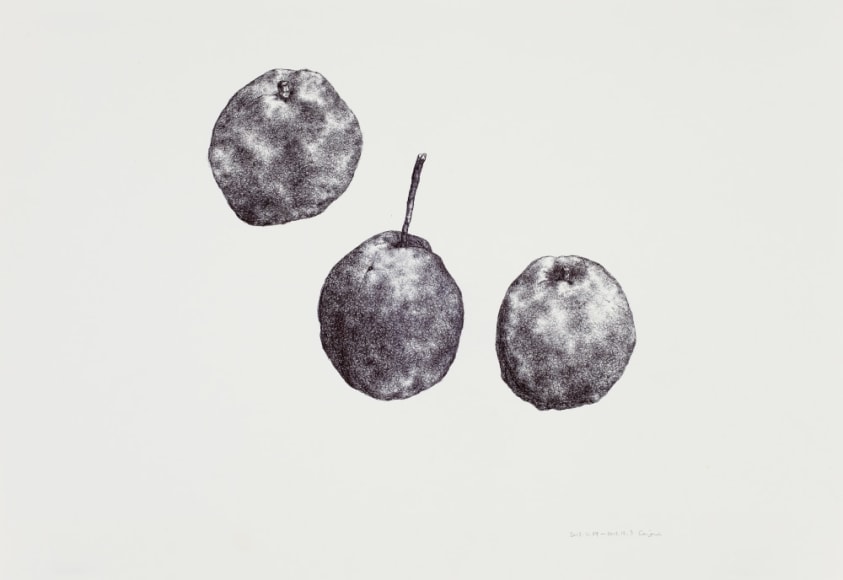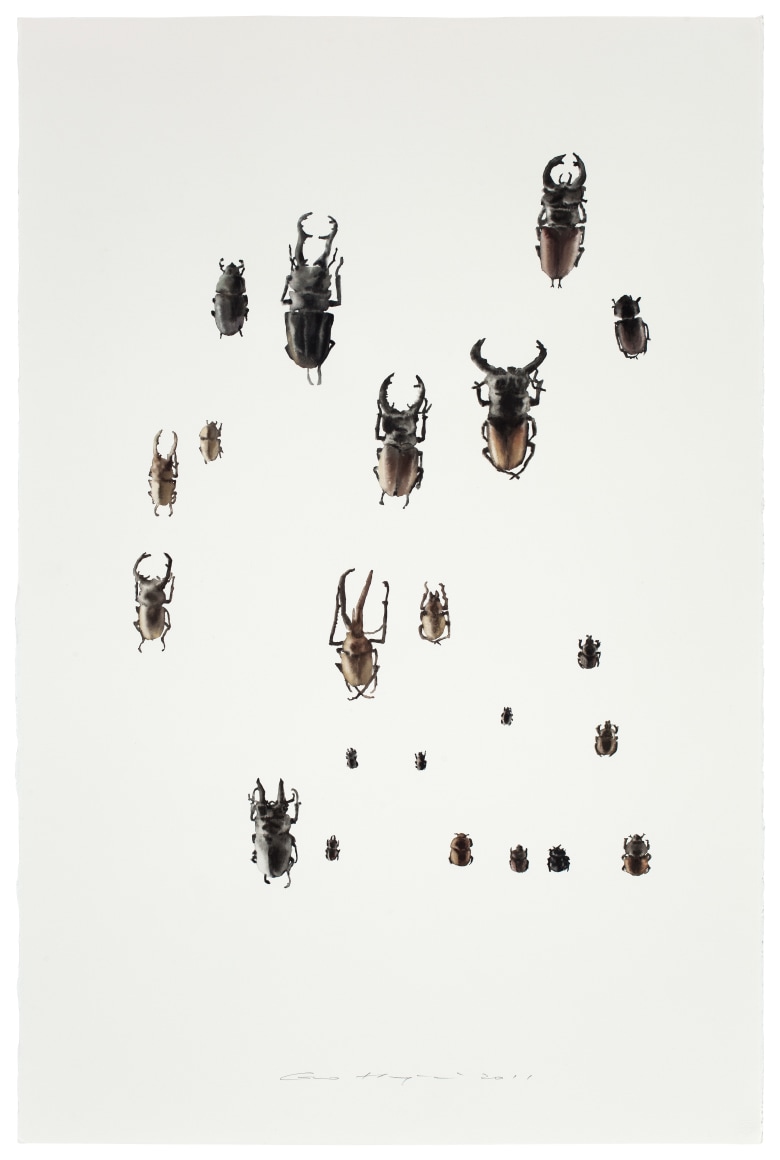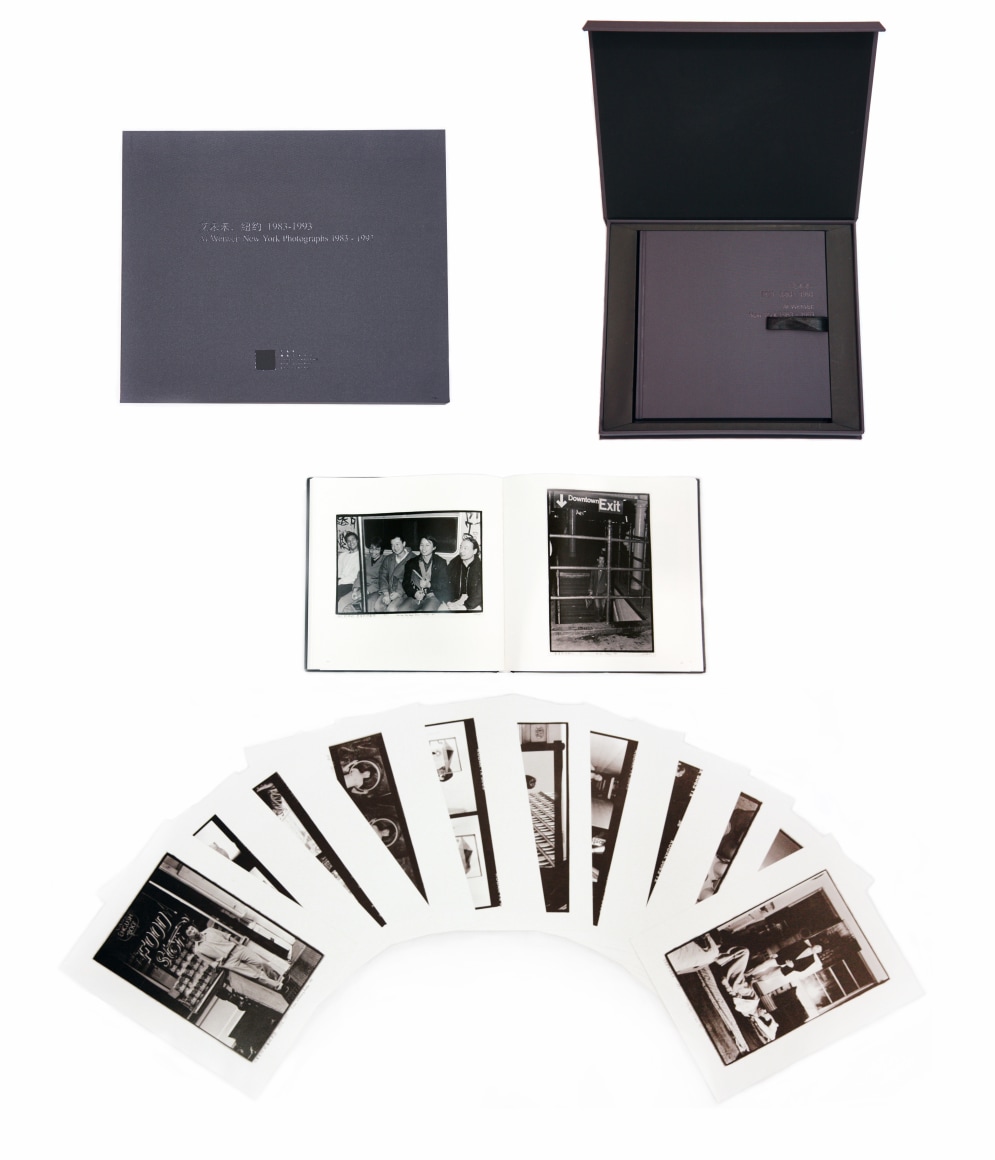Angela Lyn
Born in England in 1955, Angela Lyn studied at Fu- Jen University in Taipei, Southampton College of Art, England and Byam Shaw in London before moving to Switzerland where she attended the Kunstgewerberschule, Basel. She currently lives and works in Lugano. Although painting has always been her primary focus, she regards drawing as an essential complement, a practice that leads to the close identification with the forms of nature that is the outstanding characteristic of her deeply-felt oil paintings. Born to a Chinese father and an English mother, Lyn is irresistibly drawn to the visual and philosophical achievements of traditional Chinese culture even although her training as an artist took place in the West. Her recent works on paper are inspired by the ancient cedar trees that grow outside her studio in Lugano. By now she knows them so well that she is able to express their life-force through the non-imitative handling of her chosen medium, crayon (charcoal) on paper or tracing paper. Her first exhibition in Taiwan took place earlier this year.
Fu Xiaotong
Born in Shanxi in 1976, Fu Xiatong received her BA in Fine Arts from the Tianjin Academy of Fine Arts, Tianjin in 2000 and her MA from China Central Academy of Fine Arts (CAFA) in Beijing in 2013. It was while she was at the Academy that she developed a strong affinity for handmade Xuan paper that has been used within China since the Tang Dynasty (618-907). Likewise the subject matter that she generally favors - mountains, rocks, water – has a long history in Chinese visual culture. Over the last five years she has evolved a “language of the needle,” perforating sheets of paper in a carefully controlled manner until the desired image appears. In choosing to title her works according to the number of pinpricks required she calls attention to the procedure through which they are made. Through her obsessive daily practice, she revitalizes a theme that has been of major importance throughout Chinese history.
Guo Hongwei
Born in Sichuan Province in 1982, Guo Hongwei graduated in oil painting from the Sichuan Fine Arts Institute, Chongqing in 2004. He currently lives and works in Beijing. Although Guo works in a wide range of media, he constantly returns to the somewhat neglected medium of watercolor, using as subject matter not only the long history of botanical illustration but also his own unsystematic gathering of specimens of stones, insects, leaves etc. that he gathers on his travels. He does not use the pigment-loaded brush and its watery medium to create effects of space and atmosphere but to create discrete modules that take the form of flora, fauna, and minerals. Each of these is simultaneously a recording of the appearance of objects from the natural world and a unique demonstration of his painterly skills. The breathing space provided by large expanse of white paper is essential to the final effect.
Taca Sui
Born in Qingdao, China in 1984, Taca Sui studied at the China Central Academy of Fine Arts (CAFA), Beijing, the Rochester Institute of Technology, and the Art Students League of New York. He currently lives in Beijing and New York. He is a photographer whose deepest affinity is with aspects of China’s ancient culture that are largely irretrievable. In his first sustained body of work, Odes (2013), he traveled to remote locations that are associated with the Book of Odes (Shi Jing), the oldest collection of Chinese poetry dating from the 11th to 7th centuries BC. Two years later he traveled he traveled in the footsteps of the late Qing dynasty imperial bureaucrat Huang Yi (1744-1802) who traveled widely in search of ancient steles and other historical monuments. While some of Taca’s photographs represent acclaimed sites, others are tightly cropped and enigmatic images only identifiable by the title. The photographs are printed on Baryta paper, a special kind of paper coated in silver barium chloride that imparts a silvery or golden sheen to the prints.
Yan Shanchun
Born in Hangzhou, China in 1957, Yan Shanchun graduated from the Printmaking Department of the Zhejiang Academy of Fine Arts, Hangzhou in 1983. He currently lives and works in Hangzhou and Shenzhen. Early in his career he worked as an ink painter before concentrating on scholarly and academic studies for a number of years. After a long hiatus he returned to painting and since 2010 has returned to print making. West Lake in Hangzhou, one of the most famous and beautiful landscapes in China and a source of inspiration to countless painters and poets, provides the thematic contents of both his paintings and prints although in the latter he turns to details that suggest atmosphere rather than expansive views. Using sulfur and olive oil to etch the copper plates rather than sulfuric acid, Yan achieves visual effects of remarkable subtlety, evocative of the legendary beauty of the lake. Yan has spoken of wanting to achieve a “luminous quality like that achieved by silver-print photography, endowing the image with a heavy metallic feel comparable to my feelings about the West Lake: clear, remote, tempered, and classic.”
Wu Jian’an
Born in Beijing in 1980, Wu Jian’an graduated from the Central Academy of Fine Arts, Beijing in 2005 and currently lives and works in Beijing. While at the Academy, Wu made an intensive study of the traditional Chinese craft of paper cut and during the next decade produced increasingly elaborate wall panels and installations that reflect his immersion in mythological and esoteric subject matter. Since 2016 in works such as 500 Brushstrokes #26 he has turned to ink on xuan paper, the medium used in classical Chinese painting and calligraphy, but regards the completed image as material for a paper cut, each brush stroke becoming an individual unit once it has been cut from the sheet of paper. These are subsequently reassembled into collages on another sheet of paper. Wu’s work is currently included in the Chinese Pavilion at the Biennale di Venezia.
Wang Dongling
Born in 1945 in Rudong, Jiangsu Province, Wang Dongling received his BA from Nanjing Normal University, China in 1966 and his MA from Zhejiang Academy of Fine Arts in 1981. He currently lives and works in Hangzhou is regarded as one of China’s foremost living calligraphers. From the classical training he received from the master Lin Sanzhi (1898-1989) he acquired the confidence to experiment with ways in which the calligraphic stroke might be liberated from the simultaneous conveyance of meaning. This tendency became even more pronounced during the three years he spent in the United States between 1989 and 1991 when he was first exposed to contemporary Western painting. Although never directly influenced by Western abstraction, Wang was certainly affected by the scale of much of what he saw. Wang is now capable of working in styles that encapsulate the history of calligraphy ranging over thousands of years, from the traditional transcriptions in cursive script of classical texts to an entirely abstract mode. Among many others, Wang’s work is included in the collections of the Metropolitan Museum of Art, New York and the British Museum, London.

